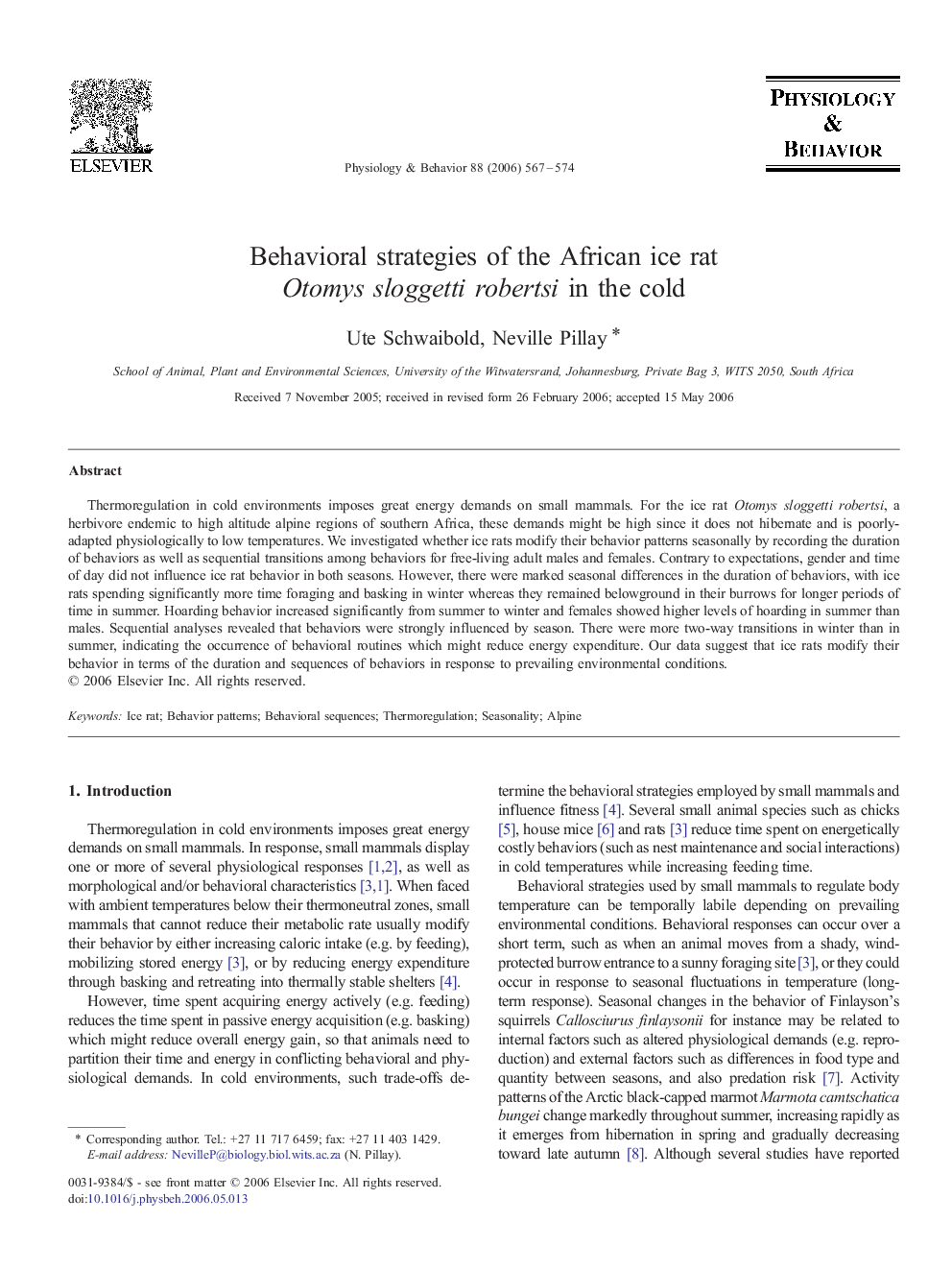| Article ID | Journal | Published Year | Pages | File Type |
|---|---|---|---|---|
| 2846260 | Physiology & Behavior | 2006 | 8 Pages |
Thermoregulation in cold environments imposes great energy demands on small mammals. For the ice rat Otomys sloggetti robertsi, a herbivore endemic to high altitude alpine regions of southern Africa, these demands might be high since it does not hibernate and is poorly-adapted physiologically to low temperatures. We investigated whether ice rats modify their behavior patterns seasonally by recording the duration of behaviors as well as sequential transitions among behaviors for free-living adult males and females. Contrary to expectations, gender and time of day did not influence ice rat behavior in both seasons. However, there were marked seasonal differences in the duration of behaviors, with ice rats spending significantly more time foraging and basking in winter whereas they remained belowground in their burrows for longer periods of time in summer. Hoarding behavior increased significantly from summer to winter and females showed higher levels of hoarding in summer than males. Sequential analyses revealed that behaviors were strongly influenced by season. There were more two-way transitions in winter than in summer, indicating the occurrence of behavioral routines which might reduce energy expenditure. Our data suggest that ice rats modify their behavior in terms of the duration and sequences of behaviors in response to prevailing environmental conditions.
